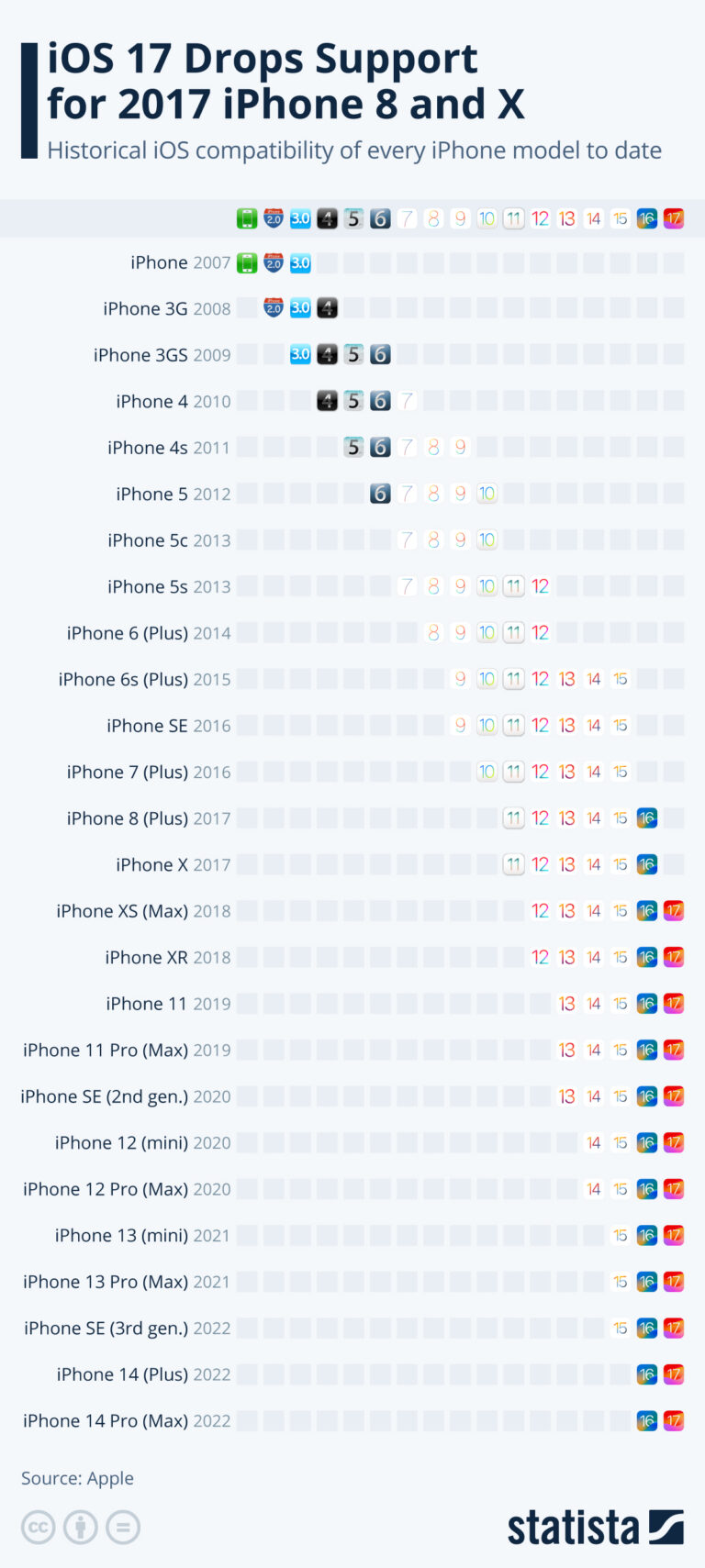One of the greatest strengths of iPhones is that they continue to be provided with software updates for years after purchase. That means you don’t have to worry that your iPhone won’t be able to keep up with the software in two years, because it will grow with you, so to speak. A question that often comes up is, “How long will my iPhones get updates?” – a legitimate question, after all, Apple cannot guarantee updates for every model indefinitely. In this article we explain how long your iPhone gets updates, how to install them and what security updates are all about.
What exactly is a software update anyway?
Your iPhone’s software is basically everything you can’t touch. From privacy and security settings to the user interface. It’s no exaggeration to say that good software is just as important as good hardware, because nothing works without it. There are updates because Apple obviously doesn’t want to stay where they are. Of course, data protection and the like are among the good reasons, but it’s also about the user experience. Only recently, with the iOS 16 update, a major change took place: the individual design of the lock screen was added, in the previous update it was the new widgets.
As you can see: With the updates, Apple guarantees you to benefit from new developments even after you have bought your iPhone and to take them with you. This sets Apple apart from many other smartphone vendors who guarantee no or no regular updates. Apple releases a major software update every year.
How do I install a software update on iPhone?
Installing a software update on the iPhone really isn’t rocket science. The first thing you should do is make sure that you are connected to WiFi and that your battery is sufficiently charged. Then go to Settings > General > Software update. Here you can now check whether a new update is available. If so, it will be displayed to you right here and you can look at some information about the update.
To install the iPhone update, tap Download and Install. You may now need to enter your lock code. You will then be asked whether iOS can also use mobile data to load the update. Since an iPhone update usually has a larger storage capacity (often several GB), we would not recommend loading via mobile data. You decide that yourself, of course. Your iPhone will now load the update, which may take a moment. An approximate estimate will be shown to you in a loading bar.
The update will then be installed and your iPhone will restart. Have patience here too, it can really take a while.
You may not be able to install an update because you don’t have enough storage space. Then you need to make some space before installing. To do this, go to Settings > General > iPhone Storage. Here you can see which apps need a lot of storage space and can sort them out quite easily.
Which iOS update should I install?
You may see multiple updates in your software update overview. For example, the update for iOS 16 is available at the top, but at the bottom there is also the option “also available: iOS 15.7.1”. Are you wondering what that means? Very simple: With the below update for iOS 15 you would only improve your existing software. Here bugs are eliminated and processes optimized, but there are no major innovations. When installing a new iOS version, i.e. from iOS 15 to iOS 16, you install a completely new operating system, from which there will also be small updates to fix errors.
Especially at the beginning of a new operating system, there are often small updates to solve emerging problems.
If you’re wondering which iPhone update makes sense, it all depends on what you want. Want the new features? Then install the latest operating system. Do you want the best possible performance? Then it can also be the case that, for example, fewer errors appear in iOS 15.7.1 than in a completely new iOS 16. Here it can be worth waiting a little longer until the first errors have already been corrected and only then does iOS 16.1. 1 to get.

What are security updates on iOS?
Apple provides security updates for significantly longer than usual software updates. For example, a security update for the iPhone 6s was only released in October 2022, which has not received any software updates for four years. With this service, Apple uses the technical know-how to ensure that users of older models can also use these iPhone updates safely.


There was a small mistake in the order. In return, I got the correct order and I could keep the wrong one for myself. I ordered on Friday evening and on Monday at 12:30 the package was with me
Everything is perfect. I would recommend!
Thank you for your reply and help!